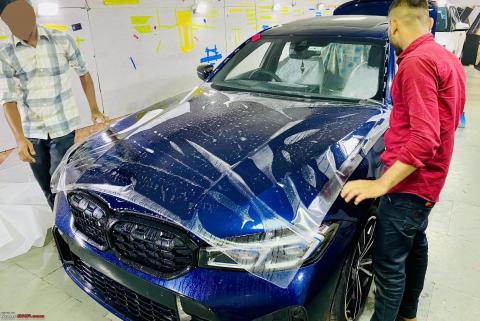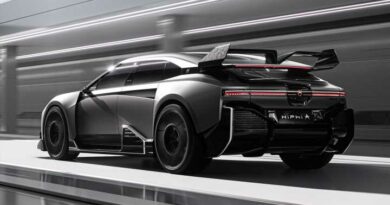Demerits of car PPF apart from its high cost
A car paint protection film is much, much softer than a ceramic coating and even softer than factory paint.
BHPian AJ56 recently shared this with other enthusiasts.
Downsides of PPF apart from cost:
- The entire car has to be pulled apart panel by panel to get a perfect invisible install, things like roof rails, grilles, plastic trim, badges, door handles, headlights, bumpers in some cases, etc. Clips get damaged/broken during this and you lose the factory fit and finish. I know people who got interior rattles after their doorpads were pulled out in order to remove the outside door handles. You’ll never get the chrome badges perfect in terms of placement and surface adhesion, no matter how skilled the installer is. (Porsche bonnet badge is an exception as it’s held by screws and not tape adhesive, but that’s the exception, not the norm.)
- Very noticeable optical distortion, also referred to as orange peel. This reduces the clarity and sharpness of reflections as you’re covering paint up with plastic. Good quality films will have slightly less orange peel than cheaper ones but still very much noticeable.
- Yellowing, no matter how high end, in about 1-2 years (less sometimes) you will start to see yellowing in the film. This may not be so obvious if the entire car is covered (as you have no reference point) and on darker colours. Once peeled, you will see it clearly.
- If you want self-cleaning/hydrophobic properties on the film, you still need to put a good quality ceramic coating over it, this adds a further 25-50k over what the film costs you. Pre-coated films also need this, the coating that they come with isn’t nearly as durable (or hydrophobic) as a pro-grade ceramic coating.
- Unlike a coating, a perfect installation is not possible. A good installer can minimise these, but there will always be minor pieces of debris, film texture (lines in the film visible on close inspection), edges peeling over time, etc.
- PPF is much, much softer than a ceramic coating and even softer than factory paint. This ensures micro marring and swirls are nearly impossible to avoid while washing even with the safest techniques, and this marring is visible until exposed to heat (unless it’s instant healing like Carpro Immortal.)
- Self-healing is not covered under any mfg warranty and is lost after a few months, it’s essentially a self-levelling polymer that can only self-level a finite amount of times. Once the self-healing effect is lost, all the micro marring due to the soft nature of the film now becomes permanent and will require very frequent machine polishing if perfect gloss is to be maintained.
- PPF adhesive can slowly start to bond permanently to paintwork in some cases, in my experience after about 3-4 years one would be well advised to remove and replace any film as leaving it longer can lead to permanent adhesion with the factory paint, damaging the very thing it was meant to protect. This is particularly true for areas that go through extreme heat cycles like the fenders and bonnet.
- Unlike a coating, PPF cannot be compounded, sanded or spot corrected in any way, even for the smallest of scratches, the only remedy is to replace the entire panels’ film. The only benefit is it can stop minor rock chips/moderate scratches, but it’s still useless against larger impacts or dents. With newer ceramic coatings coming in, which are much thicker at 20+ microns, I find it increasingly difficult to make the case for PPF (For reference, your factory clear coat is around 50-55 microns thick on most cars).
Check out BHPian comments for more insights and information.
Source: Read Full Article


